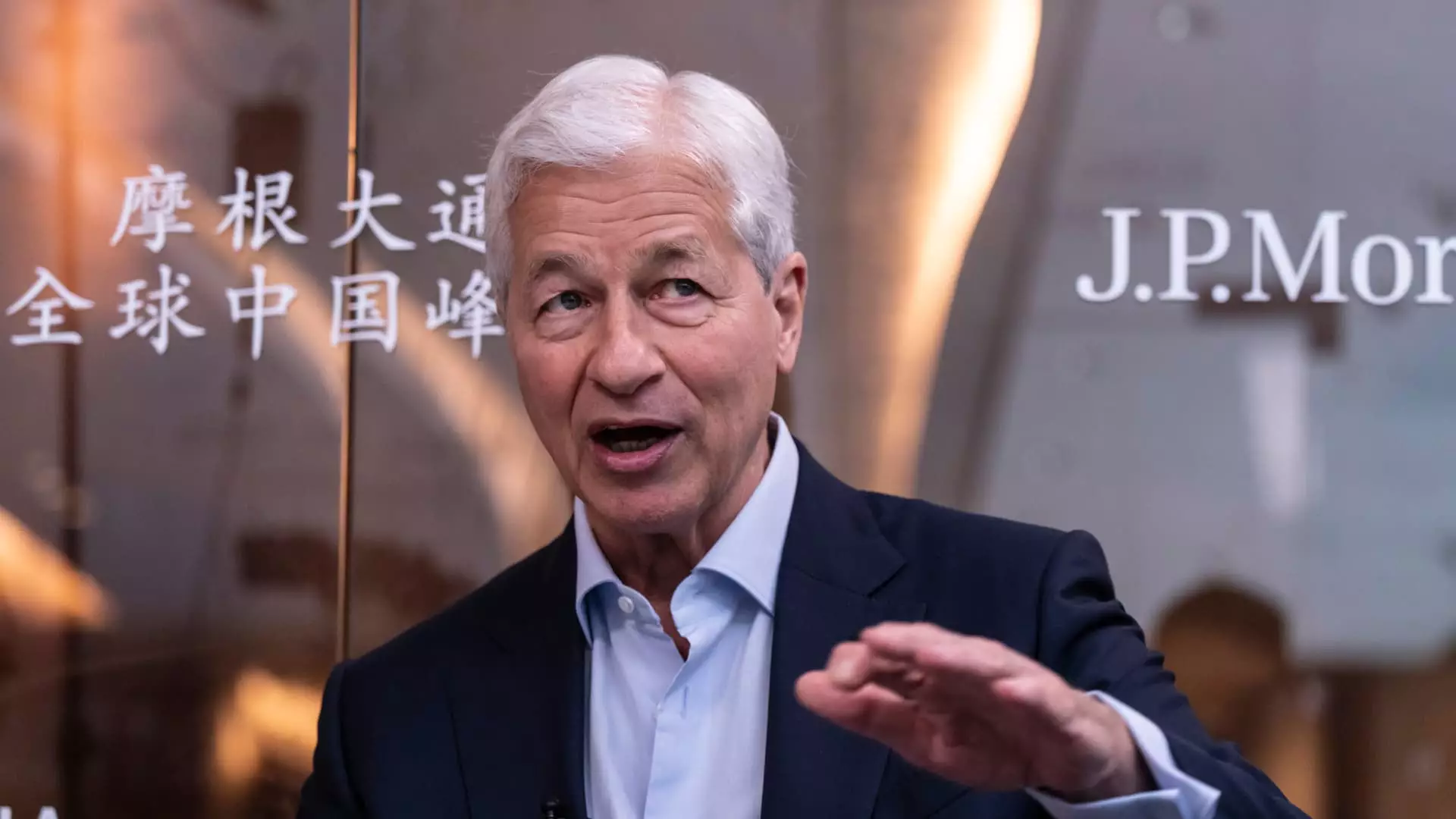Once considered a laggard in the rapidly evolving online investing landscape, JPMorgan Chase is ambitiously asserting itself as a formidable leader. With a shiny new suite of tools slated for revelation, investors can now seamlessly research and purchase bonds and brokered certificates of deposit (CDs) directly through JPMorgan’s mobile app. This transformation is not merely cosmetic; it reflects a deeper understanding of what modern investors crave: simplicity and efficiency. The bank has finally recognized that an intuitive user experience is paramount, especially as more consumers engage in self-directed investing. As Paul Vienick, the head of online investing at JPMorgan’s wealth management branch, noted, the objective is to create a streamlined interface akin to buying stocks or ETFs but in a fixed-income context.
This focus on user experience marks a pivotal shift in JPMorgan’s strategy. The bank’s leadership is no longer satisfied with simply maintaining its status as the largest bank in the U.S. by assets. Instead, they are focusing on building meaningful relationships with investors who may only trade sporadically, yet who hold immense potential for the future. The proactive steps taken by JPMorgan signal a commitment to reclaiming a lost competitive edge in the arena of online investing, a space dominated by giants like Charles Schwab and Fidelity for decades.
Faced with Giants: The Competitive Landscape
JPMorgan’s journey in the online investing realm is a captivating case study in the intersection of ambition and reality. Despite boasting over $100 billion in assets under management and a roster of financial products, it is dwarfed by the competition’s deep roots and vast client bases. The staggering gap in client engagement is a glaring wake-up call: this financial leviathan is not merely competing against other banks; it is contending with platforms that have become integral to the investing habits of millions.
JPMorgan’s previous attempts to carve out its niche included the ill-fated “You Invest” initiative, launched in 2018, which fizzled, failing to resonate with its target demographic. CEO Jamie Dimon’s candid admission that their offerings were not yet competitive is a raw but refreshing acknowledgment of their shortcomings. Such honesty might be seen as a deficit in many corporate leaders, but in Dimon’s case, it showcases a commitment to genuine improvement rather than mere bravado. The real question becomes: can JPMorgan outperform legacy institutions capable of adapting more easily due to their long-established platforms?
A Paradigm Shift: The Future of Digital Investing
The banking giant’s recognition of the necessity to provide robust online tools signifies an essential paradigm shift. Historically, the financial services industry fixated on human advisors as the revenue-generating heart of wealth management. However, as Vienick pointed out, a growing demographic of investors utilizes online platforms hand-in-hand with traditional advisory services. This evolution highlights the need for banks like JPMorgan to evolve in technologies while recognizing that the digital investing landscape is not just another trend—it’s a cornerstone of future financial interactions.
In an assertive move to capture a more engaged investor base—those who frequent trading platforms multiple times monthly—JPMorgan is incentivizing transitions with offers like cash bonuses for moving assets to its self-directed platform. While this motivation bears fruit, it raises an interesting question about the longevity of these tactics. Will investors who migrate for short-term rewards remain loyal when the allure subsides, or will they revert to the cradle of familiarity with established competitors?
Building Trust and a Comprehensive Financial Ecosystem
The undercurrent of JPMorgan’s strategy reveals a meticulous plan to foster trust among clients already banking through the institution. By consolidating financial services under one umbrella, JPMorgan aims to create a wholistic financial ecosystem that allows clients to grasp a complete view of their finances. The prospect of moving funds seamlessly between accounts is undeniably appealing, yet it rests on the dual forces of user trust and technological usability.
Not only does this initiative center around self-directed investing but also hints at broader implications for wealth management as a whole. With the industry clearly in flux, movements like JPMorgan’s acquisition of First Republic to enhance their advisory services pose an optimistic future for both wealth management and self-directed platforms—if executed effectively.
Ultimately, JPMorgan’s endeavors are illustrative of a broader trend within finance: as power shifts towards the hands of consumers, the need for banks to innovate and adapt has never been more critical. The combination of trust, streamlined access, and technological advancement could see JPMorgan soon standing shoulder to shoulder with its historical competitors. Indeed, such transformative activities could create fertile ground for further growth, allowing JPMorgan to transition from humbled contender to heavyweight champion in online investing.


Leave a Reply